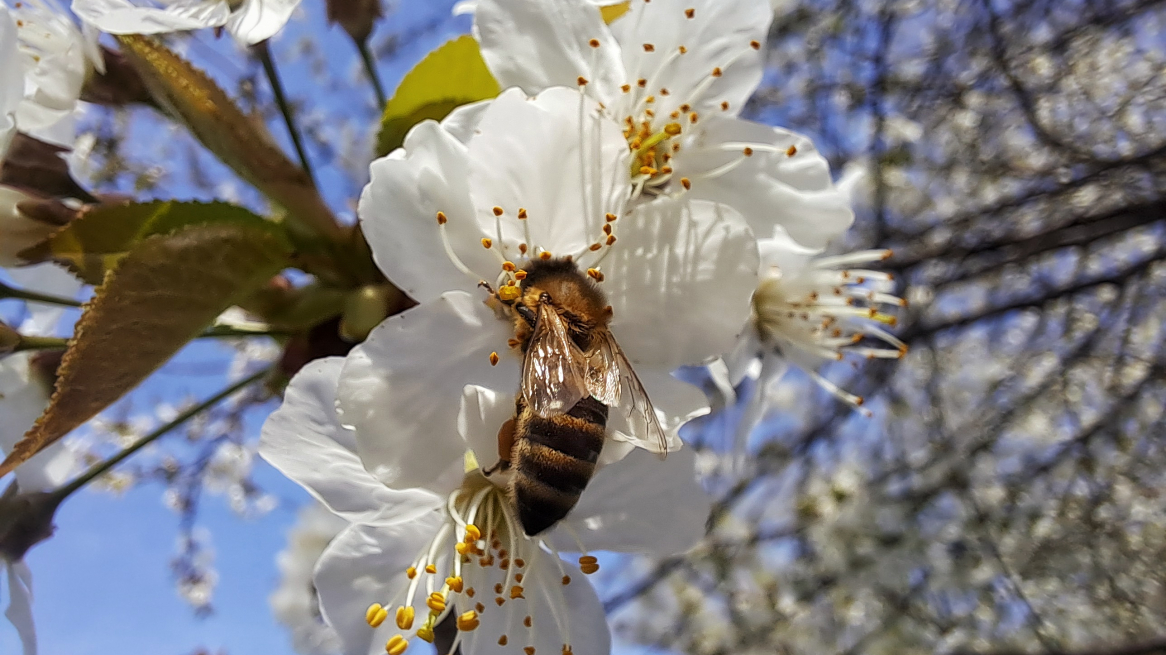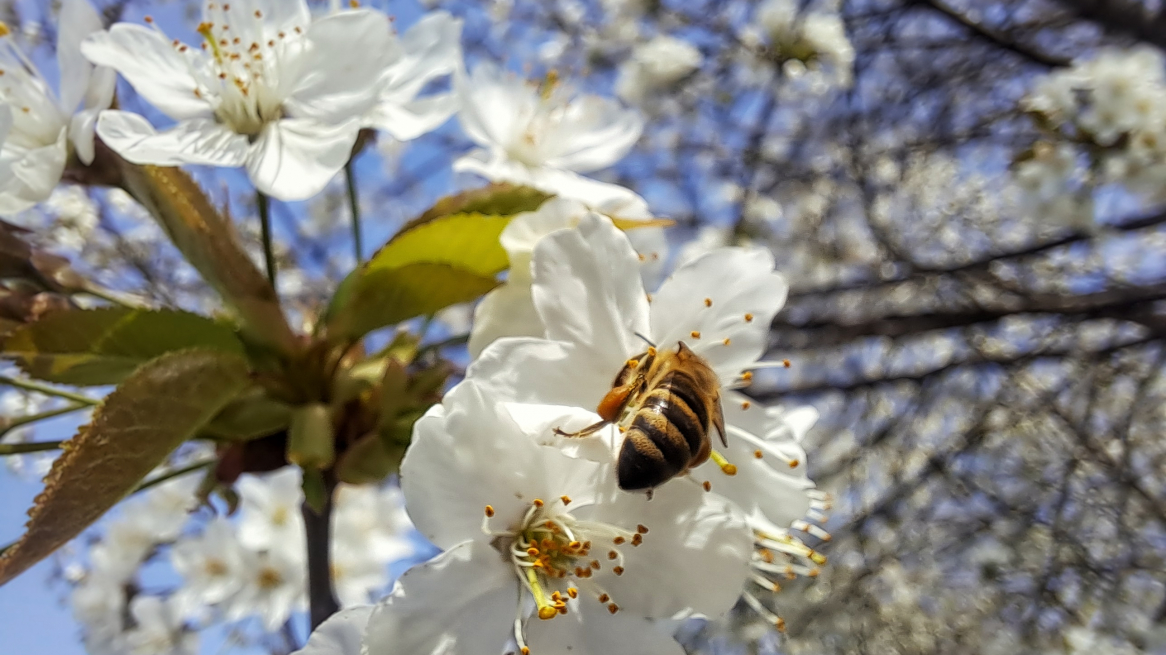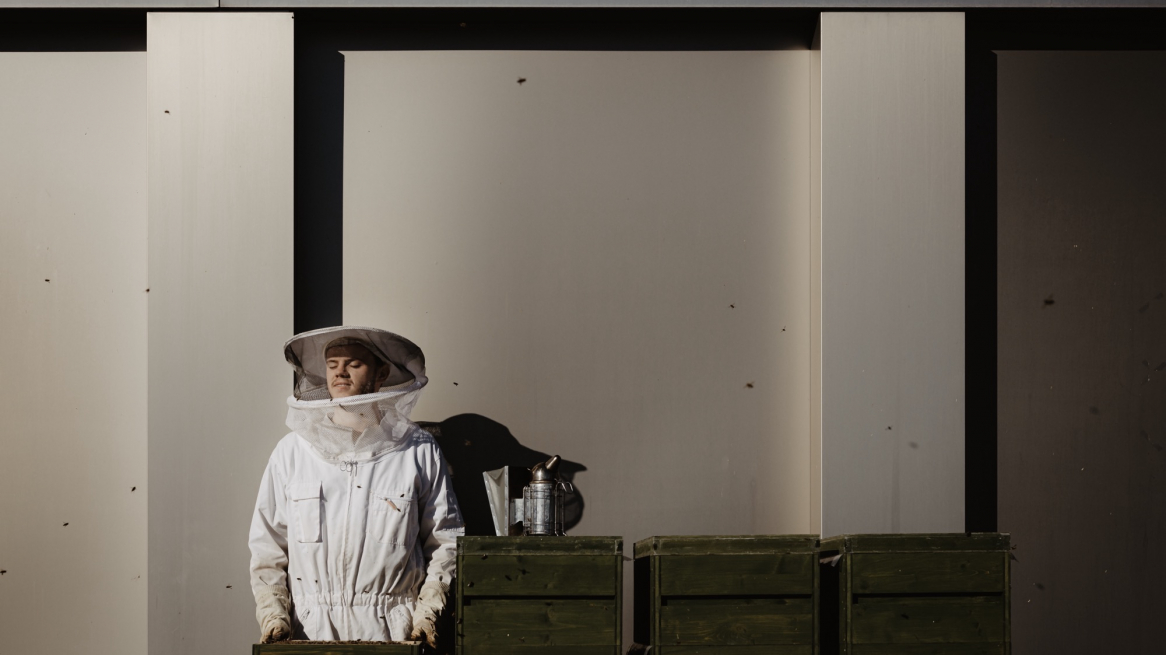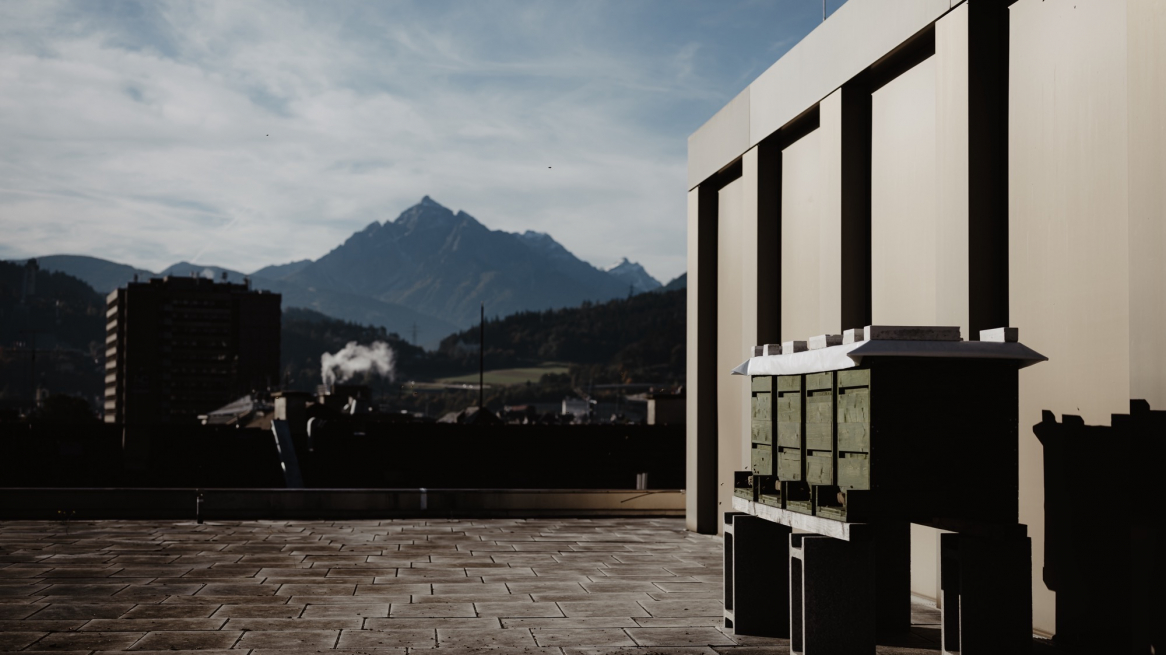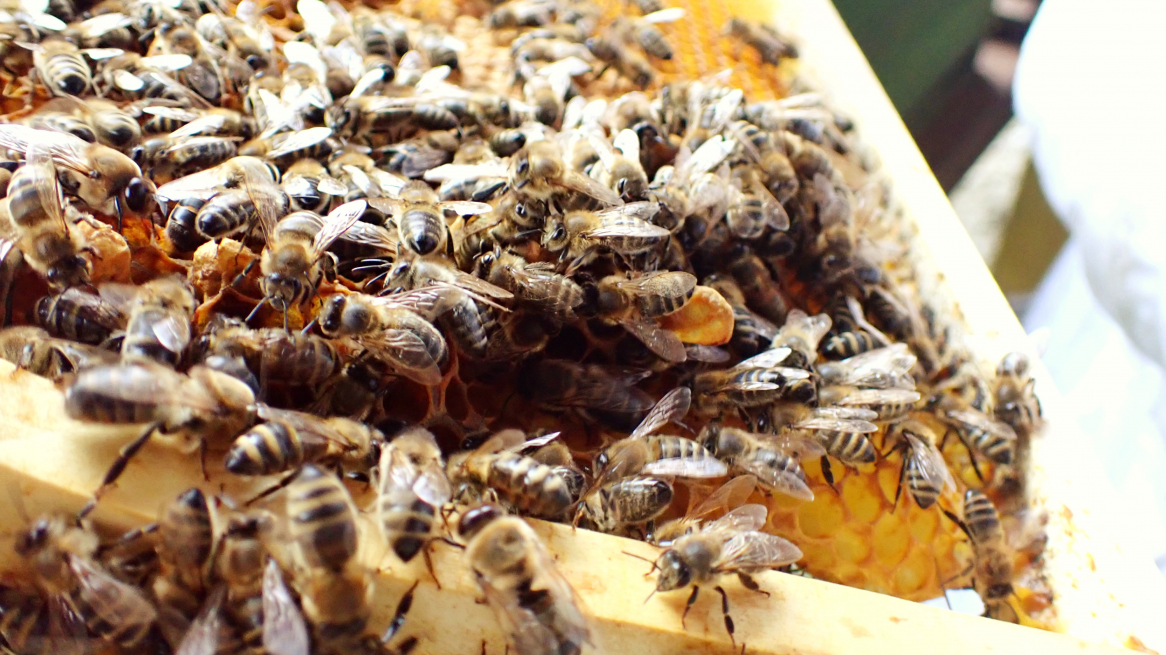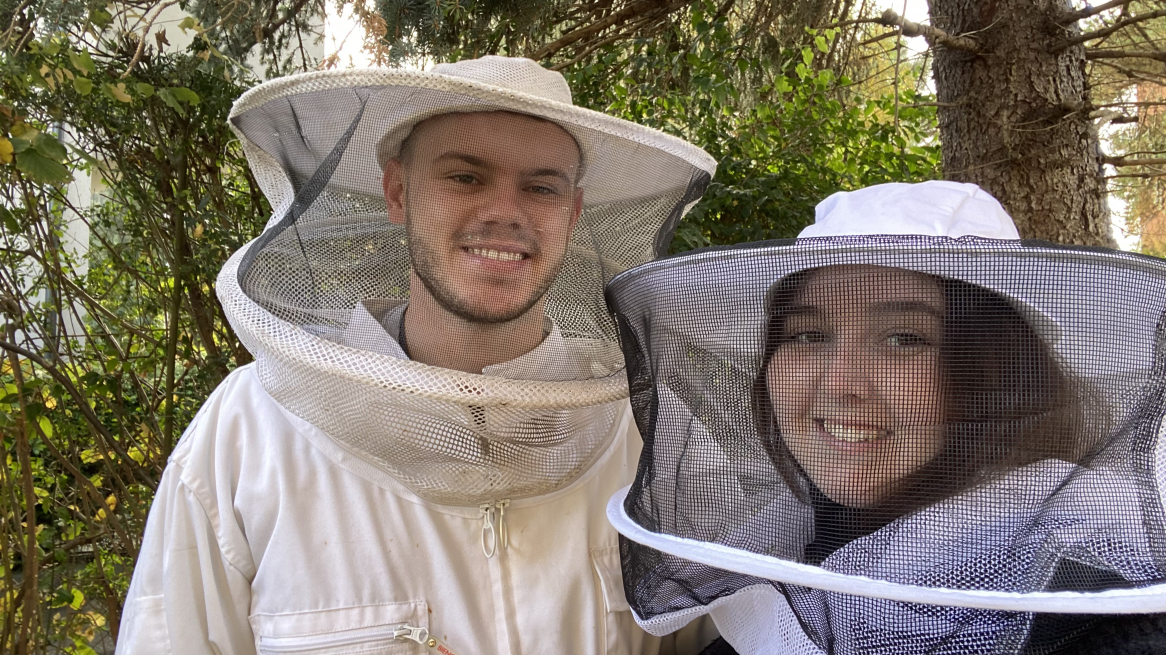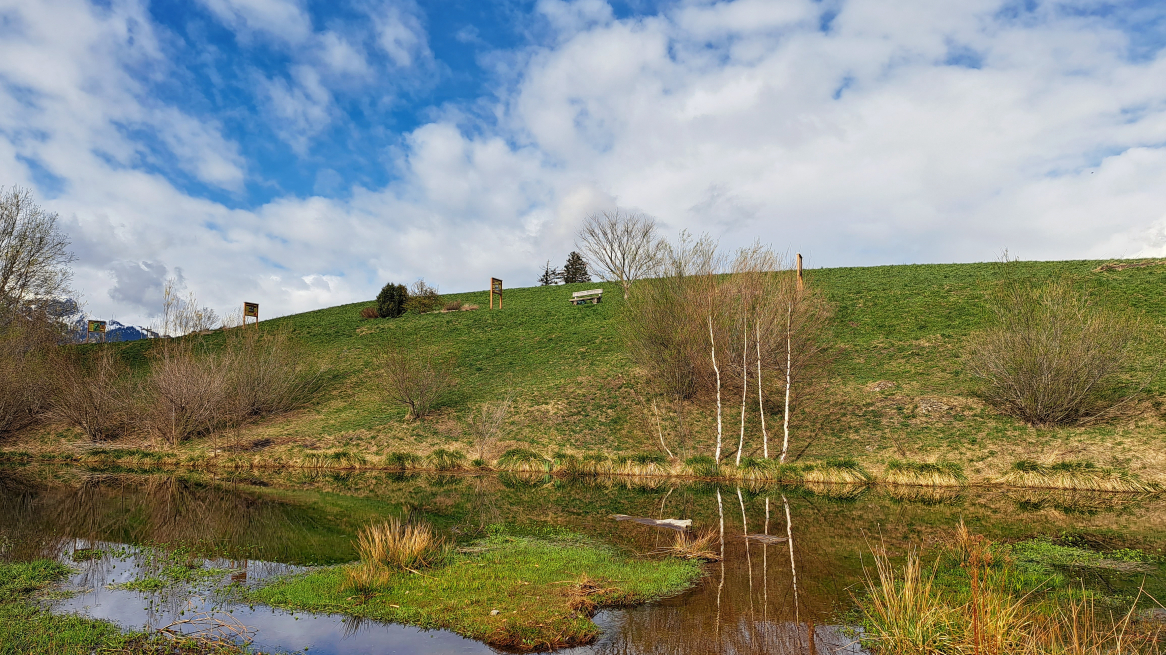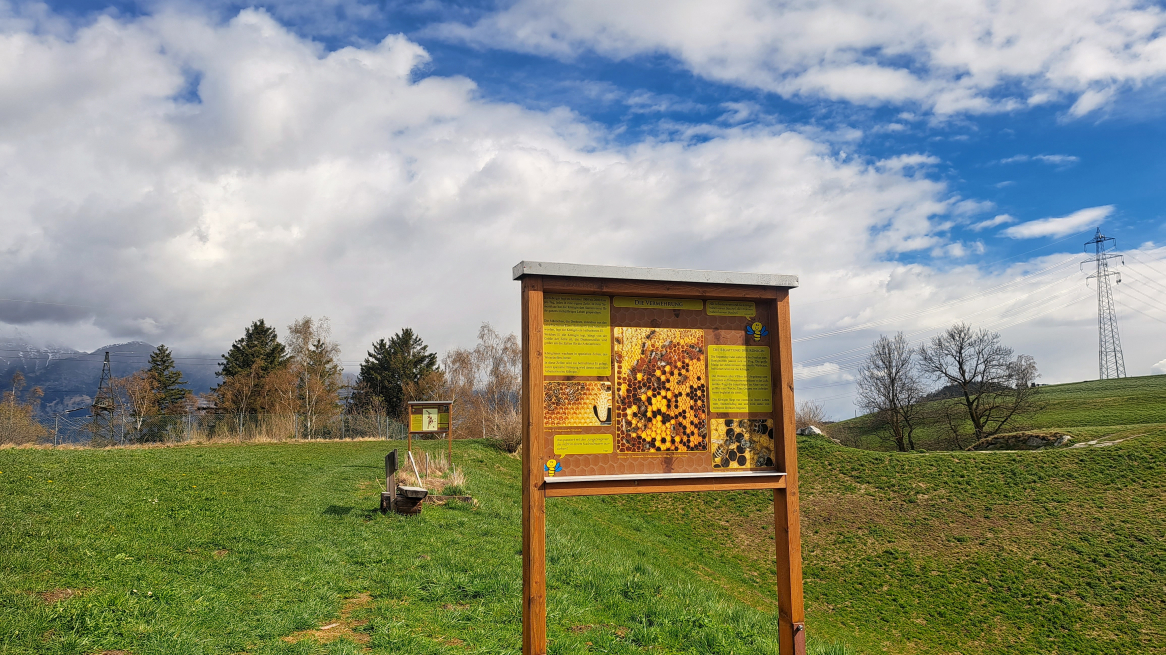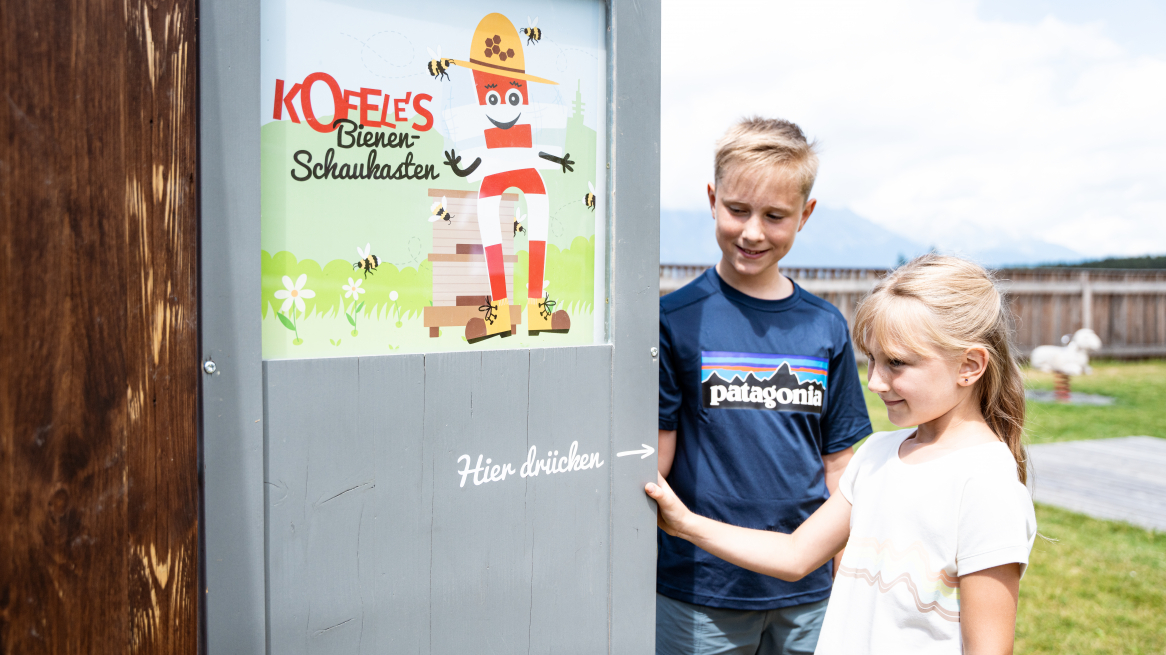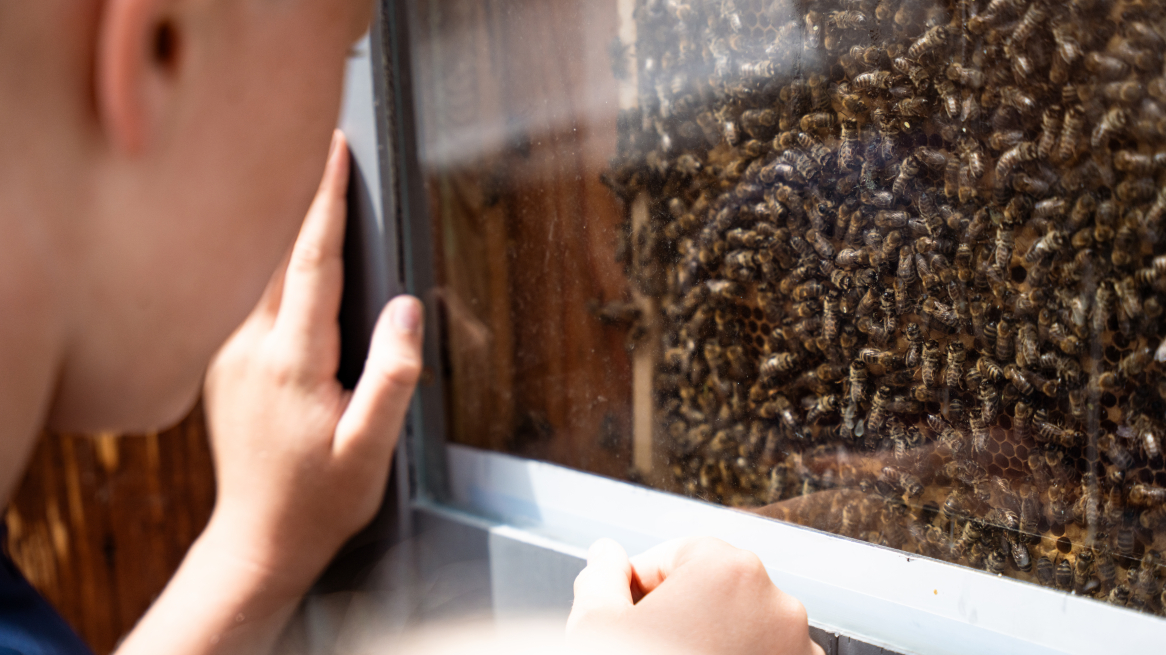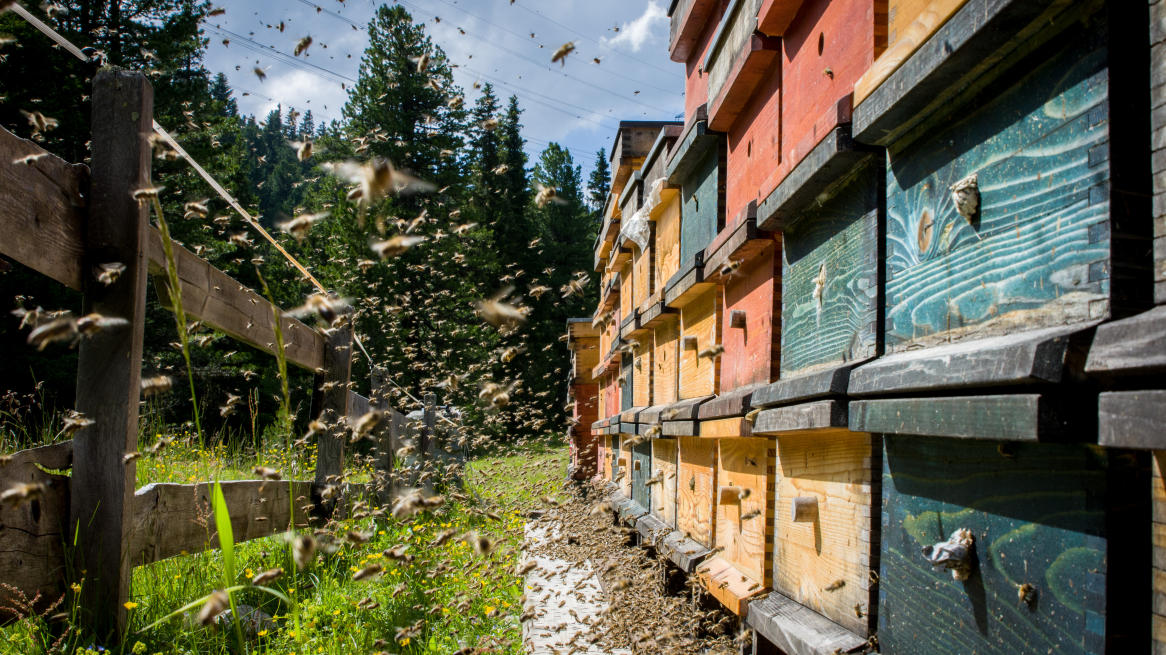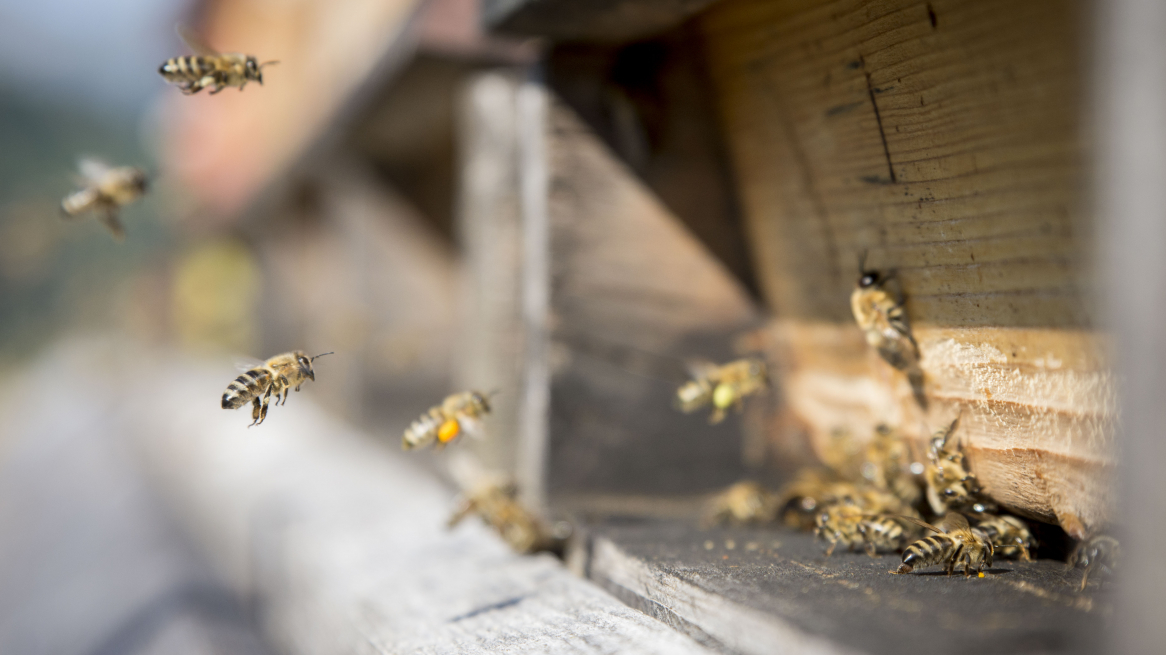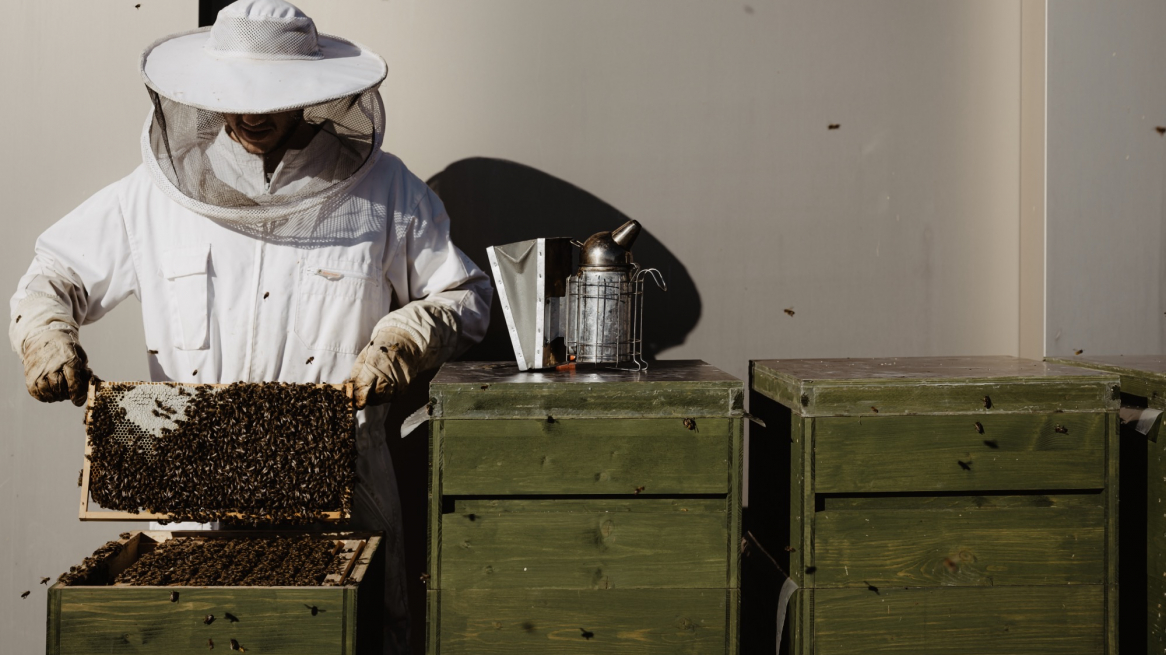
"If the bee disappears from the earth, humans will only have four years to live. No more bees, no more pollination, no more plants, no more animals, no more people."
- Albert Einstein
We have all become aware of how important bees are for our ecosystem. We are all the more grateful to the beekeepers who not only provide us with honey, but also make a valuable contribution to our environment. I had the great honor and pleasure of chatting with beekeeper Lukas Schmider. He gave me fascinating insights into his day-to-day work and I learned lots of fascinating facts about bees. For example, what aphids have to do with forest honey or what a hive is. I also visited the bee nature trail in Sistrans and can tell you where you can find out more about the little nectar collectors and where you can buy delicious honey and great bee products.
Sweet work: an interview with Lukas Schmider
How did you get into beekeeping?
Lukas Schmider: "I started out of pure interest. But maybe it's also in my genes. My grandfather had bees. Unfortunately, I never got to meet him and only learned about his work through stories."
How did you get started?Doyou need special training to work as a beekeeper?
"In theory, anyone can start beekeeping, but I'm not sure how successful you can be without training. The subject is very extensive and there is a lot to know and consider. I myself did a course at the LLA Imst training center in 2019 and started my 'beekeeping career' with three colonies. Since 2023, I have been a qualified beekeeper and look after bee colonies on the roofs of Kaufhaus Tyrol and the Alpenverein building in Innsbruck, as well as in Grinzens, Götzens and on the Hungerburg."
Speaking of bee colonies: how many bees live in a typical colony?
"It varies depending on the season. In winter there are around 10,000, in summer there are five to six times as many. Winter bees live for about half a year and are somewhat fatter, as they get more food and have to work less. A summer bee, on the other hand, 'works itself out' and has an approximate lifespan of just three weeks."
What does your typical working day look like?
"There is no such thing as a typical day. My work is very extensive and there is always a lot to do. Now in spring, it's mainly about setting up the honey chamber."
Lukas in full gear on the roof of Kaufhaus Tyrol © Emanuel Kaser
Beehives on the roof of Kaufhaus Tyrol © Emanuel Kaser
Honey room? Can you explain what that is?
"The bees live in special boxes called hives. There are two important areas in these hives: At the bottom is the brood chamber, where the bees lay eggs and raise the larvae. Upstairs is the honey room where, as the name suggests, the honey is stored. In spring, when everything is in bloom, the bees multiply and therefore need more space. To prevent them from swarming due to lack of space and starting a new colony, it is essential to set up the honey room in spring. A grid is placed between the brood chamber and the honey chamber, through which the 'normal' bees can pass, but not the larger queen. This prevents eggs or larvae from ending up in the honey."
And how does the honey get from the honey chamber into the jar?
"The honey combs are in the honey chamber. These are removed as soon as they are ripe (we beekeepers call this 'harvesting'). Then they are uncapped, which means that the wafer-thin layer of wax is removed from the combs, and then they are centrifuged. I have a separate room for this, which of course complies with food regulations and is subject to strict hygiene measures."
How often do you harvest?
"It depends a lot on the weather, if it goes well, twice a year. The first time I usually harvest the blossom honey in June, then the forest honey at the end of July."
What is the difference between blossom and forest honey?
"Unlike blossom honey, forest honey is not made from flower nectar, but from honeydew, a sweet liquid excreted by small insects such as aphids as they ingest sap from trees. This honeydew is collected by the bees to produce the darker, sweet forest honey, which is different in taste from the lighter flower honey. Nevertheless, to be on the safe side, I have samples of my honey analyzed in the laboratory before I declare it."
You look after several bee colonies.Doesthe type of bee also have anything to do with the taste of the honey?
"No, an example: the bees on the roof of the Alpine Club building are dark bees - the so-called Tyrolean original bee. However, you shouldn't think that the honey produced by these bees is darker. The taste is no different either. As I said, this depends on what the bee consumes."
Do external circumstances influence your work as a beekeeper?
"The varroa mite is a parasite introduced from Asia that attacks honey bees and is unfortunately now found in every hive. If the bees are not treated, the colony would not survive for more than two years. So you can say quite clearly: without us beekeepers, there would be no honey bees."
Thank you very much for your time and the interesting conversation. Can you tell us where people can buy your products?
"You can buy honey and other bee products at our stand in Kaufhaus Tyrol every Saturday between 9am and 6pm. If you like, you can also send me your order via Instagram or email."
On the trail of bees
A beautiful and educational walk for the whole family is the Educational bee trail at the Sistrans mill pond. I was there with my boys when they were younger and have already written an article about it - take a look here. I was recently back at the mill pond and nothing has changed. The lovingly designed bee nature trail is simply super interesting and so beautifully situated - always worth a visit!
Young beekeepers on the Patscherkofel
A great family excursion is also the Educational bee trail on the Patscherkofel. You hike from the mountain station to the Hochmahdalm. Just before the Hochmahdalm is Kofele's educational bee trail, where you can learn more about the busy nectar collectors at seven stations. There is a flyer on the alpine pasture with exciting questions that the little bee experts can answer to crack the right solution word and collect a well-deserved surprise.
Kofele's bee showcase right next to the playground at the Patscherkofelbahn valley station © Patscherkofelbahn
© Patscherkofelbahn
An absolute highlight for bee lovers is the "Kofele becomes a beekeeper" event, which takes place this year on July 28, 2024. Drop by the Patscherkofel seminar room in the Patscherkofelbahn mountain station between 10 am and 4 pm, where exciting play, hands-on and craft stations await you. In addition, Kofel beekeeper Michael Pauli will tell the children interesting facts about his work, and little (and big) sweet toothers will have the opportunity to taste Michael Pauli's honey.
The SUMSI world: How do our black and yellow friends live?
If you still haven't had enough and want to find out more about bees, visit the SUMSI World at the Alpine Zoo. Did you know that there are around 20,000 different bee species worldwide and 700 of them live in Austria alone? We are all familiar with the honey bee, one of the few insects that we humans keep as a "pet". In the SUMSI world, a separate information unit is dedicated to them, where interested visitors can gain exciting insights into their world. You can look at beehives from the inside, learn about the language of bees and find out more about the work of beekeepers.
Who has the best honey?
For all those who, after so much information about bees, are now really keen on honey and want to know where to find the best, here are my tips:
If you value organic quality, it's best to order your bee products from Gritsch organic beekeeping in Silz. Maximilian Gritsch guarantees that his products are free from residues from Varroa treatment (Lukas has already explained to us that unfortunately no beehive is free from the harmful Varroa mite). At the Gritsch organic apiary, only controlled residue-free organic wax is used and the varroa treatment is carried out with organic acids. In addition to the delicious honey, other products such as propolis drops, beeswax and various cosmetic products are also available.
If organic quality is important to you, order from Bioimkerei Gritsch. maximilian Gritsch
maximilian Gritsch
Everything the bee has to offer
Even our ancestors in the Stone Age ate honey, and honey and other bee products also have an ancient tradition as a remedy. Propolis, a resinous building material produced by honey bees, was used to embalm mummies in ancient Egypt. Due to its antimicrobial effect, it was also a popular treatment for wounds in ancient times. We still make use of these remedies today. Our beekeeper Lukas recommends propolis, for example, for inflammation around the mouth or for cold sores. I personally like cosmetic products with beeswax. If my lips are particularly dry, I sometimes even put some pure honey on them - it works wonders. My mother swears by products with royal jelly, one of the most exclusive bee products that bees use to raise their queen. Whatever you are looking for, whether cosmetics, delicious honey or fragrant candles, in the Tyrolean bee shop you are guaranteed to find what you are looking for!
I've always liked honey, preferably in tea in winter. But now that I've learned more about the work of beekeepers and the sweet little bees, I appreciate the delicious honey even more.
About us
Imkerei Lukas Schmider
Instagram
TikTok
E-mail: info@imkereischmider.at
Bioimkerei Gritsch
Homepage
E-Mail: max.gritsch@gmx.at
Tiroler Bienenladen
Homepage
E-Mail: info@tirolerbienenladen.at
Cover picture: © Emanuel Kaser
Rate this article
Show me the location on the map
Mother, TV series addict and nature lover with a passion for good food and the mountains!
Similar articles
The mountains around Innsbruck are not only known for their breathtaking beauty, but also for their living…
Beautiful and good: the noble product world Anyone in Tyrol looking for high-quality regional products in attractive…
What do you do when the highest elevation near your home town is only around 150 meters?…
The first time I met Isobel Cope, I was halfway through presenting my radio show Sensations in…

